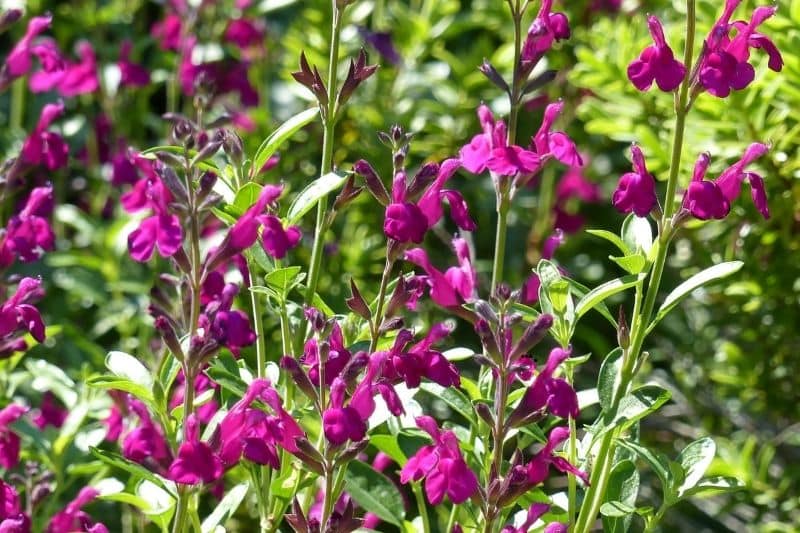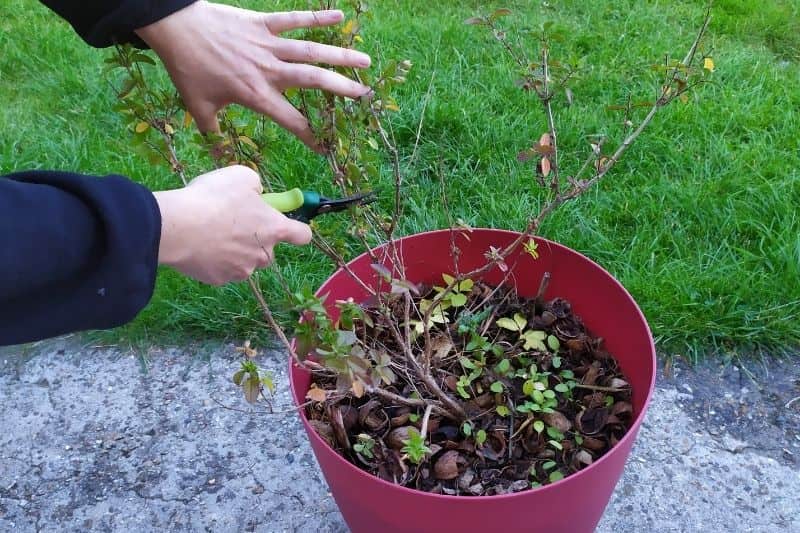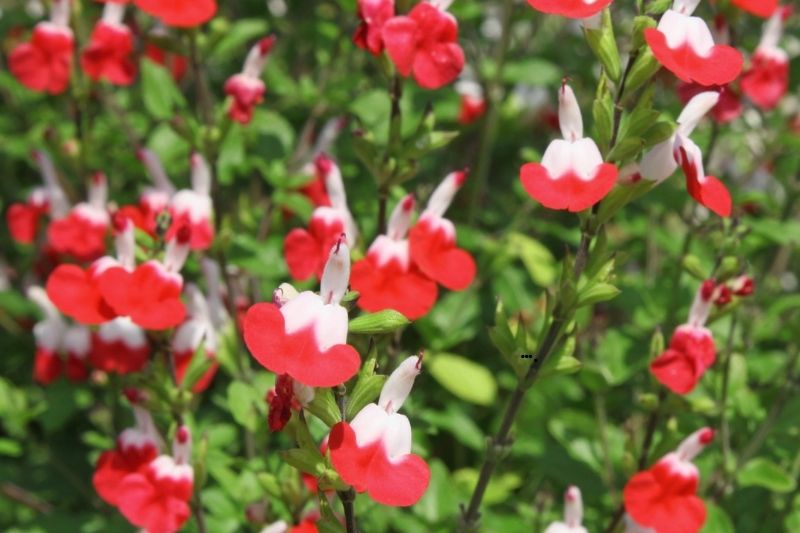Bushy sages are charming perennials, highly valued for their long flowering period, from spring to autumn. The spike-shaped flowers come in colourful shades - red, mauve, blue, pink, salmon, white or bicoloured depending on the variety. Its woody stems and bushy habit give it the appearance of a small bush. Easy to grow, it requires little maintenance apart from annual pruning.
Discover when and how to prune bushy sage easily with our illustrated tutorial!

The Salvia jamensis 'Raspberry Royal' is a lovely bushy sage with raspberry-red flowers, slightly purplish
When to prune bushy sage?
Pruning sage should be done in late winter and early spring, between late March until late April, or even early May in regions with late frosts.
Warning: for many plants, pruning is often done before vegetation resumes, either in autumn or winter, but this is not the case with bushy sage! Quite the opposite! You must wait until the sage shows signs of vegetative regrowth before pruning it. In other words: wait until it starts producing young shoots in spring before cutting its branches. If you prune your sage during autumn or winter while it is in dormancy, this will force it to wake from its slumber. It may then start sap flow much too early in the season, which will weaken it, or even prove fatal.
How to prune a bushy sage?
What equipment will you need?
The wood of bushy sages is woody and rather hard to prune. So equip yourself with secateurs, taking care to disinfect them before use to avoid transmitting diseases from one plant to another.
To facilitate the regrowth of your sage, provide a supply of compost. Specimens in containers or pots will need, in addition to this supply, a flowering plant fertiliser.
Why prune sage?
By pruning your bushy sage, you will encourage it to produce lower buds, which will give rise to vigorous shoots. This also helps to clean up the clump by removing dead wood and unsightly branches that unbalance its shape. Your sage will thus appear bushier during summer and take on a lovely bushy form. Without pruning, the wood will become bare on the lower part of the plant, revealing the woody branches and its shape will be unruly.
Pruning sage
1) Between late March and late April, observe your bushy sage regularly. Wait until you see a few small leaves appear before pruning, so as not to damage your plant by cutting too early.
2) Using secateurs previously disinfected, cut back all branches by half, or even by two-thirds. Even if this cut may seem drastic, it promotes the production of buds on the lower part of the stems. Your sage will quickly regrow and produce new shoots.

Cut back stems by half, or even two-thirds.
3) Enrich the soil:
- In open ground, add well-rotted compost at the base of your sage to facilitate its recovery. Scratch the soil with a hand fork to incorporate this addition more easily.
- For sages in pots or containers, also add compost or a complete fertiliser just after pruning, to enrich its substrate and help it regrow. In May and June, also apply a flowering plant fertiliser to increase flower production.
4) During the flowering period, regularly remove faded flowers to encourage your sage to produce new flowering spikes.
To go further:
- Discover all our varieties of bushy sage.
- To learn everything, discover our complete guide on sages, salvia: planting, pruning and care.




































Comments